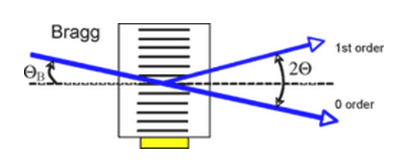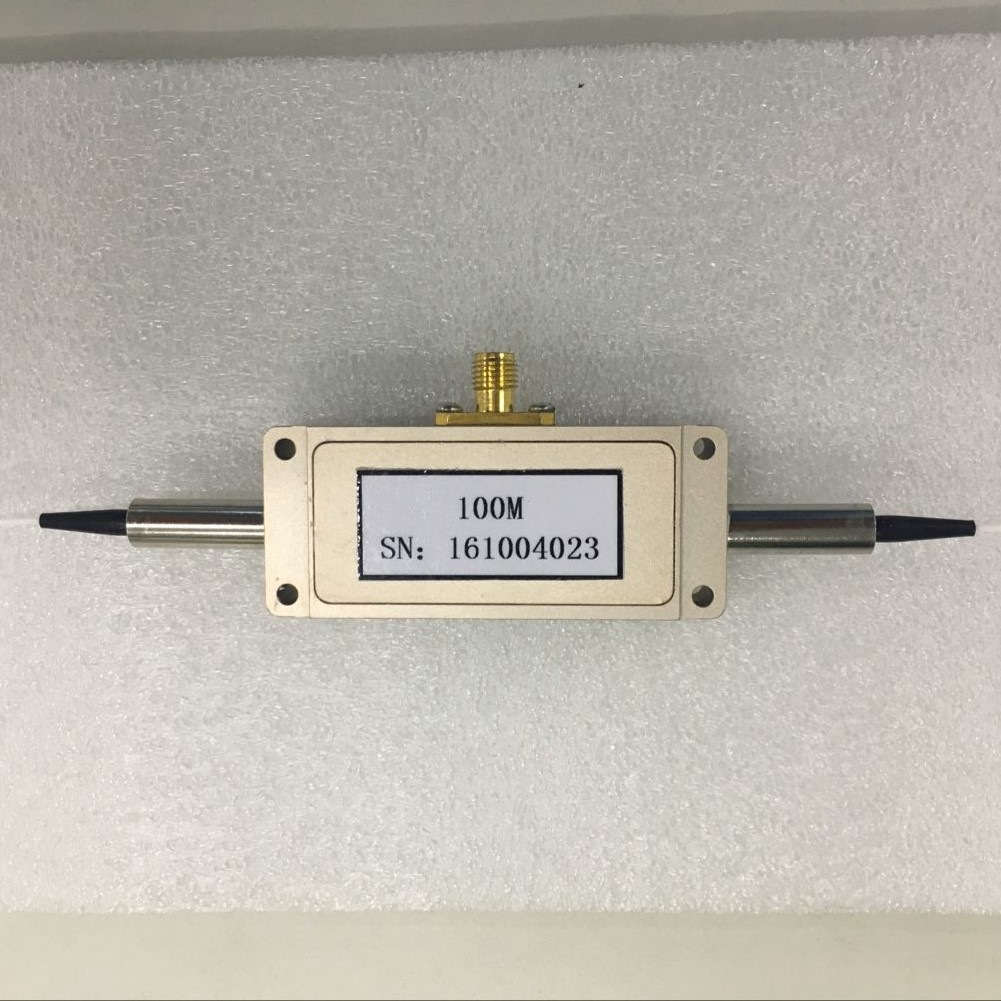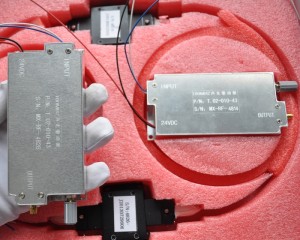How Acousto-optic modulator works
The light goes into the Acousto-optic medium, ray diffraction happenes. We can control the acousto-optic medium by Electronic signals. As the result, we can adjust the ray diffraction.
See the picture below for?Bragg diffraction .The key element of an acousto optic modulator is a transparent crystal (or glass) through which the light propagates. Light can experience Bragg diffraction at the traveling periodic refractive index grating generated by the sound wave. The acousto optic modulator is called Bragg cells.?

Direct modulation is to pass the electronic signals into the Semiconductor light source. The light source may be laser diodes LD or semiconductor lighting LED. Then we will get the optic signals. Because the modulation happens inside, it's also named internal modulation.External modulation is to control the signals outside. Acousto-optic modulation is external.?Two methods of direct modulation: Simulation and Digital.
One of the important specs of?acousto-optic modulator is VSWR.??Two kinds modulators: free space acousto-optic modulator (FS AOM) and fiber-coupled acousto-optic modulator (FC AOM). They're mainly used in color printing, laser imaging and display, optical fiber communications switches, scientific research. The most commonly used?fiber-coupled acousto-optic modulators are 1064nm,?1310nm , 1550nm.
The acousto optic modulator has the ability to adjust the lasers, here are some articles.
Acousto optic modulator lock the laser frequency.
Use ?acousto-optic modulator to achieve 1.6-GHz cw modulation of a multiwatt cw argon laser operating at 488 nm and 514.5 nm.
Acousto-Optic Imaging,Exploration of the possibilities and limitations of the acousto-optic method; development of instrument prototype for quantization of chemical components.
Applications:
The AOM diffract a single beam of incident light. Multichannel AOM can independently modulate an array of lights for signal processing and optical computing. Read this book about?acousto optic devices and applications.
The AOM Q-switched fiber laser is modulated by low voltage, so it can abtain high-power pulse with high repetition by Q-switching continous-wave.?
There are other topics like :
Multi-Channel AOM
If you want to know more basic principles of acousto-optic theory and acousto-optic devices,check this website.
Brimrose list most of the topics about AOM here.
Introduction to Acousto-Optic Devices
AOTF Tunable Filters - Free Space
Acousto-Optic Modulators
Multichannel VIS Deflectors
Acousto-Optic Frequency Shifters
Acousto-Optic Mode Lockers
Acousto-Optic Q-Switches
Acousto Optic Deflectors
2D AO Deflector Application [1]
2D AO Deflector/Scanner Specification
Acousto-Optic Cavity Dumpers
AOTF Hyperspectral Imagers
Acousto-Optic Imaging: ?Exploration of the possibilities and limitations of the acousto-optic method; development of instrument prototype for quantization of chemical components
Cobolt offers a range of high performance, reliable and user friendly laser assemblies specially tailored for advanced Optogenetics research. The laser assemblies have been developed in close collaboration with leading Optogenetics research laboratories and offer experiment-ready solutions for configurable solutions for channelrhodopsin activation and halorhodopsin inhibition. To achieve precision modulation, Cobolt offers the 04-05 Series lasers with integrated acousto-optic modulator (AOM) in the same package with a 04-01 DPSS laser.
Compact acousto-optic modulator operatingin the purely Raman — Nath diffraction regime as a phase modulator in FM spectroscopy
Results of initial tests on an acousto‐optic modulator using a new chlorotellurite glass with a composition of 3TeO 2 ‐2ZnCl 2 are reported. This glass exhibits a wider transparency range (0.42–5.7 μm) than other tellurite glasses,?


